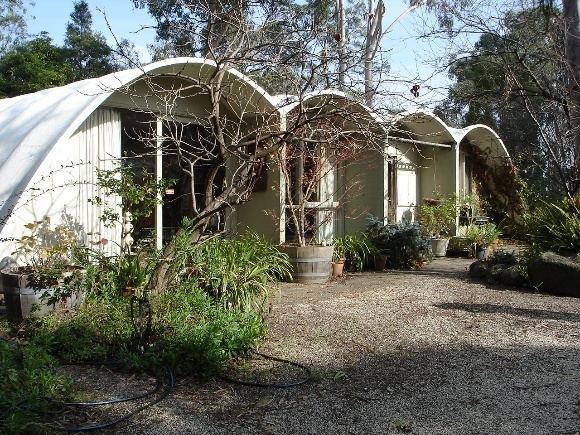 | ||
The Rice House is a residence located at 69 Ryans Road, Eltham, Victoria, Australia, built from 1952-53. Designed by Melbourne architect Kevin Borland for a young couple, whose open mindedness and excitement for progressive/alternative ways of living allowed quite a different archetype for housing, the house is notable for its unusual construction technique and use of materials. Rice House was the first experiment of three architectural explorations in Melbourne, and saw the development of a recognisable Melbourne regional style of architecture.
Contents
- Clients
- Physical properties
- Interior
- Site
- Construction technique
- Key influences
- Architectural relevance
- References
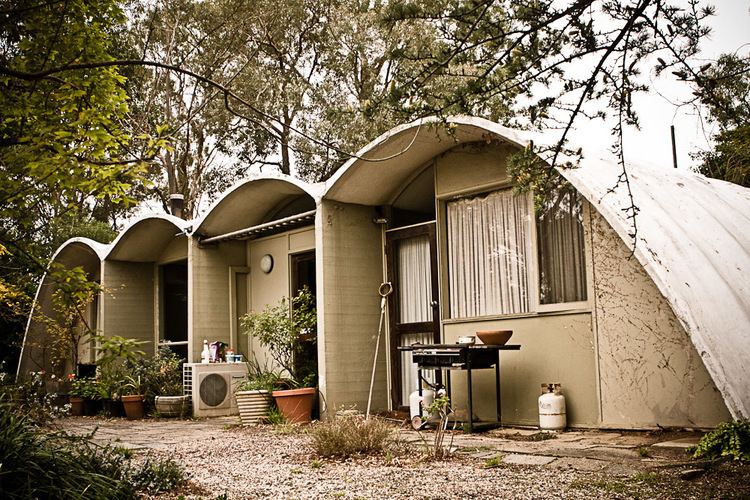
Clients
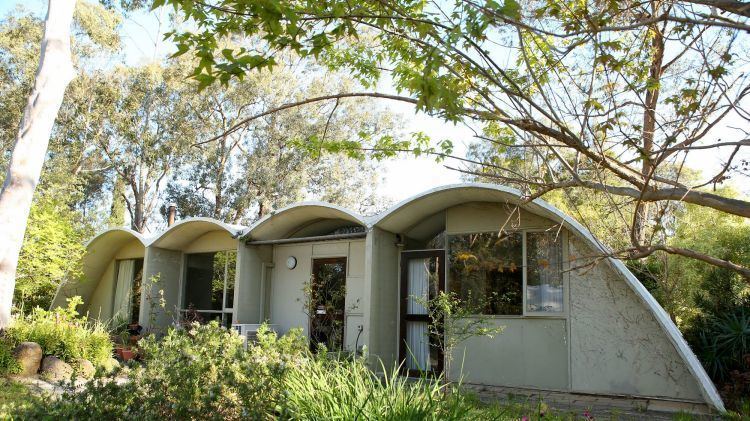
Young artist Harrie Rice and wife Lorna were a young couple whose exposure to The Age RVIA Small Homes Service saw them fall in love with modern housing design. An attempt to meet with Kevin Boyd at RVIA Small Homes Service led Harrie and Lorna to meet their architect Kevin Borland.
Physical properties
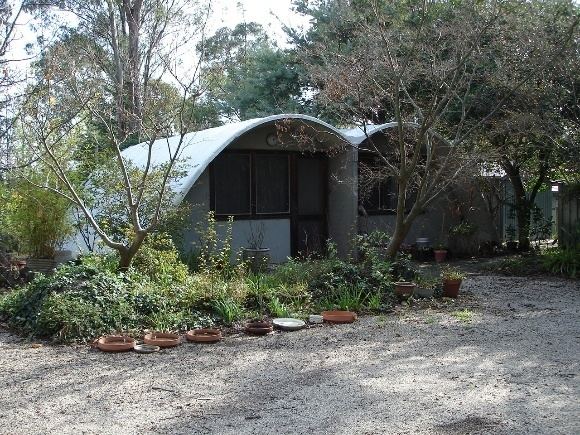
The house is made up of two structures, in which a series of catenary arches form the outer walls and roof as one self-supporting superstructure, connected by a covered walkway. The main house consists of four arches supported by brick and concrete walls which also define a series of interconnected rooms, housing the study, dining, kitchen, laundry, living, master bedroom and bathroom as well as multiple courtyards.
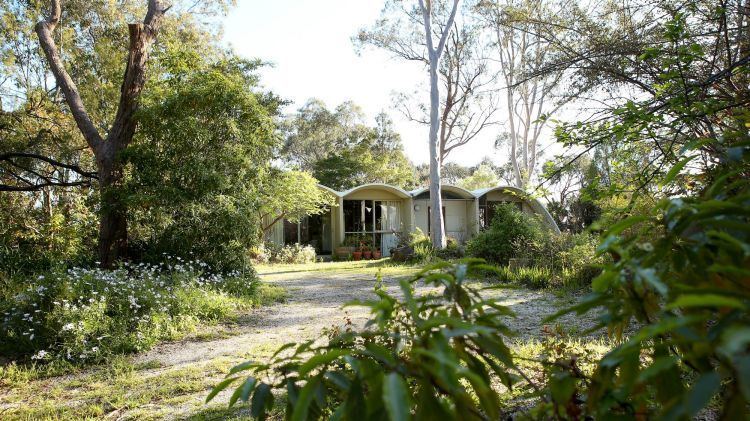
The second structure consists of two arches and was originally designed as a garage/studio but in the mid-1950s was refitted under Kevin Borland's supervision as a self-contained flat for their two children.
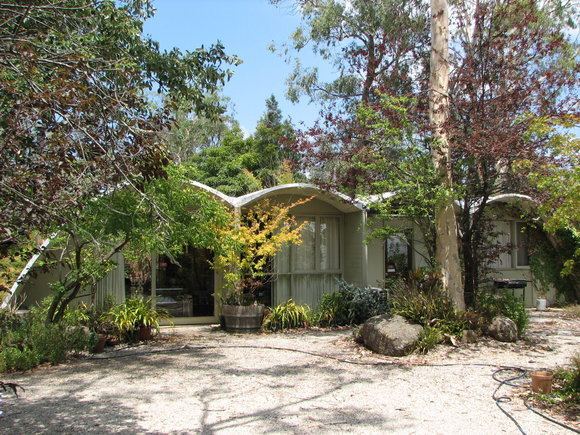
The covered walkway consisted of a succession of metal frames with 'draped' reinforced concrete, formed between. The clients regarded this as a 'structure of great beauty' however due to moisture penetration, the structure met its demise from rust and the expansion of the reinforcing.
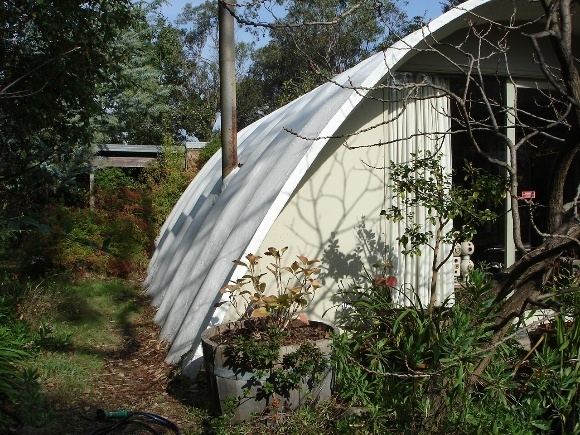
In 1973, Borland designed the carport and extension of the kitchen area at the rear southern side of the main structure which is sympathetic to the design and siting of the original house. Borland extended the flat roof covering the laundry to create a carport for three cars and a couple of necessary storerooms.
Interior

The interior of the house was comparable to caves occupying small spaces and volumes. The invention of these structural moves were developed by Borland using metal columns for the front porch will later failed and buckled due to the expansion of the material and the movement of the form work.
Site

In what would seem like an unorthodox process, the house was designed without a particular site in mind. Due to the common conservative view towards housing at the time, a site was chosen to accommodate the contemporary design rather than the other way around. Eltham's council had a progressive, open-minded view on architecture and was possibly one of only two suburbs at the time that would allow this kind of design.
Located on a hilltop in Eltham toward the north-east frontier of Melbourne, the 750m² site for the Rice House was purchased. It was amongst Eucalypts, wattle and cherry ballart trees, with a bed of orchids and bark covering the ground. Although built on the hill the design was positioned on uniform ground with no earth needed to be touched.
Construction technique
Borland turned to a method that had been used by the Italian Air Force during World War 2 for its hangar construction in north Africa. A system which had then later been patented by J H de Waller, a British engineer.
Constructed by forming timber arches, with hessian suspended between and concrete poured over the top. The beauty of the technique was that a single structural element acted as both roof and walls.
The system used the following 5 step procedure:
- Reinforced concrete slab is poured with reinforcing exposed at certain intervals to secure the superstructure to the slab
- Formwork containing reinforcement is then placed on top of the interior walls and then poured to form the concrete beams
- Arched timber frames are fixed to slab using the exposed reinforcing
- Hessian is then pulled tightly over the frames
- Three coats of concrete are then poured over the top
Key influences
Architectural relevance
This particular technique was the first of three buildings to be constructed. The other buildings include the Wood House and Supermarket designed by Robin Boyd in 1952, and Bellfield Community Centre designed by Kevin Borland and Peter McIntyre in 1953 all in which directly reference the Rice House.
Borland's design for the Rice House is an example of post-war domestic experimentation within Melbourne. It is the outcome of late-modernism coupled with the post-war shortage of regular building materials which saw the development of a recognisable Melbourne regional style of architecture.
